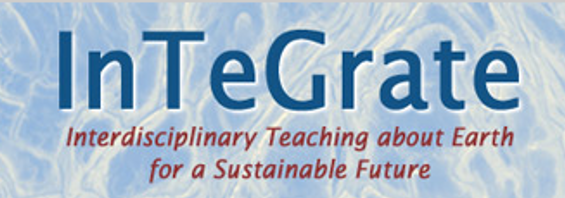InTeGrate is using the QUBES Resource System to share open educational resources. Click on the resource title to view the full record where you can download the materials. Follow this link for more information about QUBES resources.
InTeGrate Resources
Core Resources
Regulating Carbon Emissions
Version: 1.0
Learn how to incorporate these teaching materials into your class. Find out what's included with each module. Learn how it can be adapted to work in your classroom.
The Map Your Hazards module provides students an interactive mechanism to engage in place-based exploration of natural hazards, social vulnerability, risk and the factors that shape their communities perception of natural hazards and risk.
This module addresses this need by providing students the opportunity to examine the differences between intensively managed agricultural landscapes (e.g. grazelands, conventional tillage) and "natural" landscapes (forested or prairie).
Natural Hazards and Risks: Hurricanes
Version: 1.0
Making the difficult decision to evacuate before a hurricane makes landfall can save lives and property. This two week module explores how hurricanes connect the ocean-atmosphere-terrestrial systems and society.
In this two to three week module, students explore short-term climate variability resulting from atmosphere-ocean-ice interactions.
This two-week (~10-hour) module focuses on water and its importance to humans, both as a limited resource and in shaping Earth's surface.
Environmental Justice and Freshwater Resources
Version: 1.0
This module enables students to identify the freshwater components of the hydrologic cycle and connect them to the basic need of all human beings for equal access to clean freshwater.
InTeGrate FMN 2018
Adapting InTeGrate Materials for Online Courses
Version: 1.0
As part of my second mentoring of the InTeGrate FMN for QUBES, I chose to focus on my conversion of several resources to an online course format.
Critical Zone Science Part II
Version: 1.0
As part of our effort to model the redwood forest water budget, we used the InTeGrate Unit 5.2 to put numbers to pathways.
Critical Zone Science
Version: 1.0
My class used Water Balance of a Tree (Unit 5.1) to begin quantifying the fundamental pathways for water movement within a forest. The ultimate goal was to model transpiration of the redwood forest on the UC Santa Cruz campus.
I incorporated three units from InTeGrate into my General Biology II class. This document outlines how I used these materials, and what modifications I made to them.
I implemented Unit 5 of the "Climate of Change" module into two weeks of my nonmajors Environmental Science course to cover the concepts of atmospheric science, climate change, and data evaluation.
The Systems Thinking module (Units 1-3) was utilized in two separate introductory biology courses, General Biology II Lab and The Living Environment online course.
The Climate of Change module was implemented in my Introduction to Environmental Sustainability course. We concluded the semester with an in depth examination of climate change, which includes how it is monitored, long and short term climate variability,
The Carbon Cycle, Climate Change, and Feedback Loops
Version: 1.0
I combined material from the Carbon, Climate and Energy Resources Module and the Changing Biosphere Module to help students understand climate change, the carbon cycle, and feedback loops in my intro Ecology class.
: Exploring Geoscience Methods was an excellent capstone experience for Elementary Education Majors. The class I used this module with was 24 students of various backgrounds and academic preparation. I introduced this exercise as a capstone in the last th
